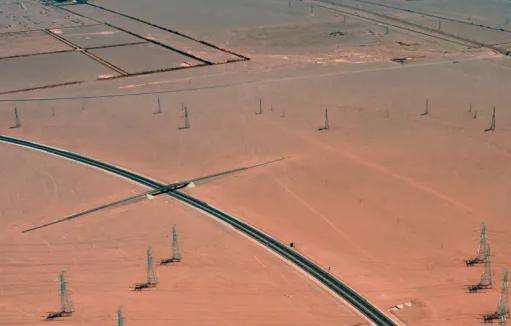Ocean currents are easy to remember if you understand them, but if you are unfamiliar with their names, read them twice. I have a lesson plan on ocean currents here. You can check it to see if this is the case. help. When looking at this lesson plan, carefully identify the distribution map of global ocean currents
(The lesson plan does not explain the southern Indian Ocean monsoon currents, this part can be studied separately)
The following is from the lesson plan:
p>So, how do ocean currents form? In fact, many factors affect ocean currents, the most important being the prevailing wind.
Now let's review the prevailing winds. In Chapter 2, Section 2, Pressure Belts and Wind Belts, we learned that the world can be divided into five pressure belts and six wind belts. These are b beltsasse equatorial pressure and trade wind belts (northeast trade winds) from the equator to the east. second level. /Southeast trade winds) Subtropical high pressure belt? Eastern subpolar low pressure belt?
How do these prevailing winds affect ocean currents? The teacher provides here a simplified schematic map of the main continents of the world. Please ask students to follow the teacher and take a look.
Affected by the trade winds, seawater in the equatorial region moves with the wind, toward the northeast in the northern hemisphere and toward the southeast in the southern hemisphere. This movement occurs on the surface of the earth and constitutes a horizontal movement of the earth's surface. In Chapter 1, we learned that due to the Earth's rotation, horizontal motion is modified by the geostrophic deflection force: Where does the Northern Hemisphere deviate? What about the southern hemisphere? In this way, the water fromface moved by the wind is deviated to flow from east to west. We call these two warm ocean currents in the equatorial region the North Equatorial Warm Current and the South Equatorial Warm Current.
From here we can see that in addition to the influence of the prevailing winds, the factors that affect ocean currents are also the geostrophic deflection force.
The equatorial ocean current continues to move forward. After meeting the continent, some of the seawater splits north and south, forming the Warm Japan Current in the North Pacific; The Australian Warm Current in the South Pacific and the East Australian Warm Current in the southern Indian Ocean. The ocean current is divided by the island of Madagascar. A current flows through the Mozambique Channel and is called the Mozambique Warm Current. the east coast of the island of Madagascar and is called Madagascar Warm Current. These two hot currents meet at cap Agulhas, at the southern tip of Africa, to form the warm Eurasian Sea Current in the South Atlantic.
From here we can see that another factor that affects ocean currents is the shape of the continent.
Part of the equatorial ocean current is diverted as mentioned above, and part is due to the surface waters of the equatorial zone being carried away by the trade winds, so that the bottom layer and surrounding waters seawater must replenish this part of the blown seawater. This process is called compensation and results in the equatorial countercurrent. Compensation is therefore also one of the causes of ocean currents.
Let's take a look at current ocean currents. It is not difficult to see that their directions of movement are from low latitudes to high latitudes, that is, from warm sea areas to cold sea areas. These ocean currentsThese are collectively called hot currents. Warm current is a type of ocean current classified according to the nature of the ocean current.
Looking at the names of these ocean currents, the first half is the name of the place the ocean current passes through, and the second half is the nature of the ocean current. It can be seen that the rules for naming ocean currents are based on the names of the places the ocean currents pass through. Name of place + nature of ocean currents.
Having looked at ocean currents affected by trade winds, let's look at ocean currents affected by westerly winds.
Affected by the westerly wind and the geostrophic deflection force, the Agulhas Current, the Warm East Australia Current and the Warm Brazil Current merge leftward in the Southern Ocean, forming an ocean current that flows through the Southern Ocean. Hemisphere. We This ocean current is calleddrifts westward.
As westward drift occurs in high latitudes, sea water is cold and ocean current flows from low latitudes to high latitudes. We call this ocean current “cold current”. Cold currents are another category of ocean currents classified according to their nature.
The northern hemisphere is affected by the westerly wind and geostrophic deflection force, forming ocean currents in the North Pacific. According to the rules for naming ocean currents, the ocean current here arises from warm waters. zone to the cold water zone, which is a warm current. Name of place + Nature is equal to ? (North Pacific Warm Current). The warm North Atlantic Current also forms in the North Atlantic Ocean.
The westward drift beneath the western belt of the Southern Hemisphere meets the continent and divides into northern and southern branches. The hot current flows towards the lathigh itudes, and the cold current flows toward low latitudes and merges into the northern and southern branches. the north and south equatorial currents of a compensatory nature.
According to the naming rules...:
Cold current of Benguela? Cold current from Western Australia? Peruvian cold current
The same is true in the western belt. of the Northern Hemisphere:
Warm Alaskan Current? Cold flow from California? Canary Cold Current
Finally, let's take a look at the ocean currents under the eastern polar belt.
Affected by easterly polar winds, the following ocean currents form at high latitudes of the Northern Hemisphere:
The Kuril Current (also known as the Oyashio), the cold current of East Greenland. , and the cold Labrador Current














